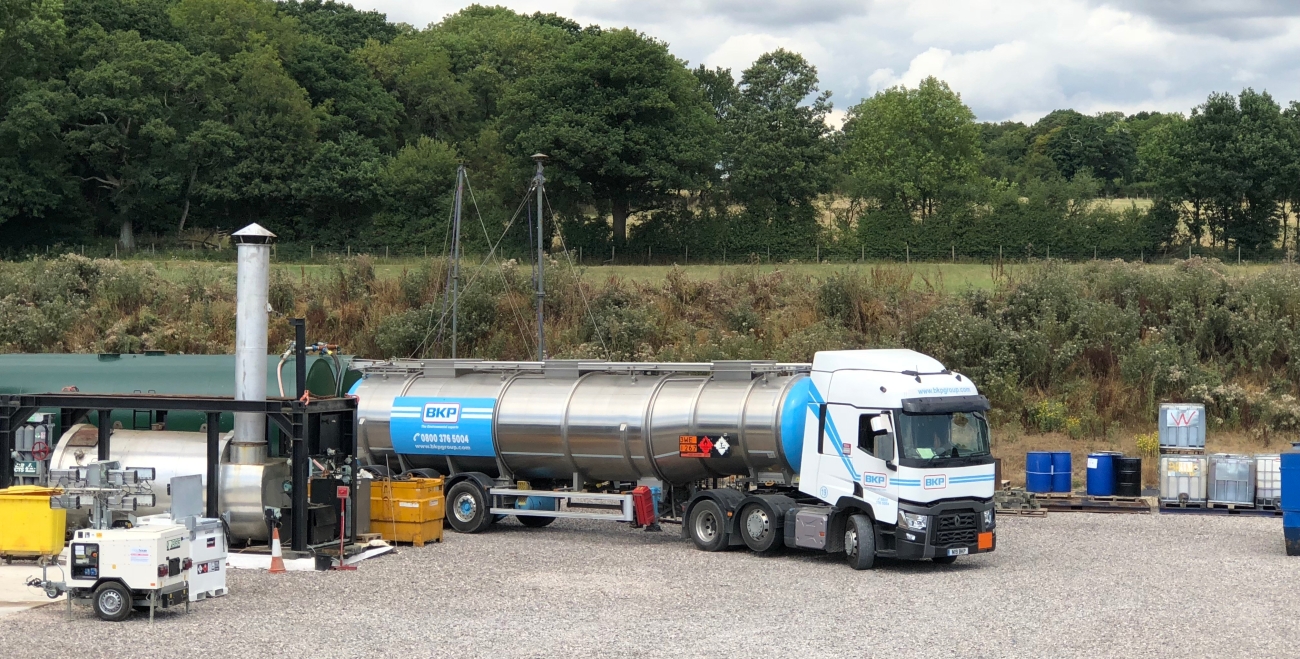
Horse Hill oil site near Gatwick Airport, October 2018. Photo: Used with the owner’s consent
UK Oil and Gas, the major investor in the Horse Hill oil site in Surrey, has forecast that permanent production would be underway by next winter.
This will follow extended well tests during this year on the current HH-1 well and two new boreholes, the company said.
In a statement to investors, the chief executive, Stephen Sanderson, said:
“UKOG aims to deliver near-continuous oil production throughout 2019 via a combination of long-term testing of HH-1 and two new wells, followed by a smooth transition into permanent production in the winter.”
The statement said UKOG planned to continue the current extended well test on HH-1 until spring 2019.
It would then “move directly” into the drilling and long-term testing of two new horizontal wells, to be called HH-2 and HH-1z, the statement said. Planning permission was granted for this work in Ocober 2017. UKOG said environmental permits and funding for the work were also in place.
A new planning application for another four wells and long-term production at Horse Hill was submitted to Surrey County Council in December 2018. UKOG said it made an application for an environmental permit for this work last week (10 January 2019). Details of the permit application have not yet been published by the Environment Agency.
On the four extra wells, the statement said:
“It is anticipated that all necessary permits should be in place by autumn 2019, enabling a transition from EWT [extended well test] production into permanent production during winter 2019.”
Flow test data
The statement also gave details of the current extended well test on HH-1, which has been underway since June 2018.
It said the company had now produced more than 25,000 barrels of oil. Of this, more than 21,000 barrels had been produced from the Kimmeridge limestone. 114 tankers had been exported to the Hamble oil terminal, the company said. No formation water had been returned to the surface during the entire well test.
The company said 2,192 barrels were produced in late November from the KL4 section of the well. The flow rate was said to be 584 barrels of oil per day (bopd) based on the maximum measured over half an hour.
UKOG also said the KL3 and KL4 zones were now regarded as a single oil pool and the company had decided to produce from both sets of perforations at the same time. Flow rates from both sections varied from 303- 525 bopd.
Categories: Industry

Excellent news we need UK oil rather than imports remember oil is not used in UK to generate electricity , it’s a great contributor to “the most of” things we use everyday from the phones we use to the plastics in everyday life…. and yes until we solve the renewables shortfalls the fuels we need to support our everyday lives including most transport systems and heating in our homes.
And, rather appropriate being next to Gatwick-subject to expansion due to increased demand-making use of our local resource to produce fuel for that demand. All very environmental! And, if the 6% (I believe) of net income to the local community is agreed, then that demand would increase.
The next stage will be to see what horizontal drilling produces.
Just get on with the renewables. Even those in favour of fracking see it as a ‘bridging technology’, We need to stop hampering the renewable industry and encourage it.
There is no hampering. One does not preclude the other. Indeed, in Norway, it goes a long way towards funding the other.
Bridging? Maybe renewables, as now, are a bridge to fusion? Your logic would say we should stop hampering fusion via currently investing in renewables.
You already have the option to invest in renewables, generally and for your own use. Others (perhaps the increasing numbers flying from Gatwick) want their own choices too, not dictated by a few.
So why then have there been far more water tankers in and out of the site in recent weeks than the amount of oil tankers needed to Chieve these figures. You could indeed reverse the oil and water figures.
What a load of incorrect rubbish!
Now around 118 tankers full of crude with have left Horse Hill nearly all which have been checked by observers. They all carried the crude hazard plates. Suggest you get some better sources of information.
L MIllard..They have to remove all water from the site for environmental reasons…ie rain water…How bloody good are they .
No water is from the well..read the article….Maybe the people camped outside the gates could clean up after themselves as thorough?
Tried many times LM.
If you don’t like reality, that is your choice but to expose it for all to see rather weakens the post. The volume of oil has been detailed in a recent RNS which is an official document that needs to be correct, and is covered above by DoD.
However, if you have any proof that document is incorrect then you have the ability to have it corrected. My speculation is that you haven’t and it won’t be.
Well done UKOG!
Unfortunately they can only produce about another 8000 barrels of oil and they then reach the limit set by the OGA. Total is 5300 tonnes.
https://www.whatdotheyknow.com/request/513050/response/1260646/attach/html/9/ogaewtcons.pdf.html